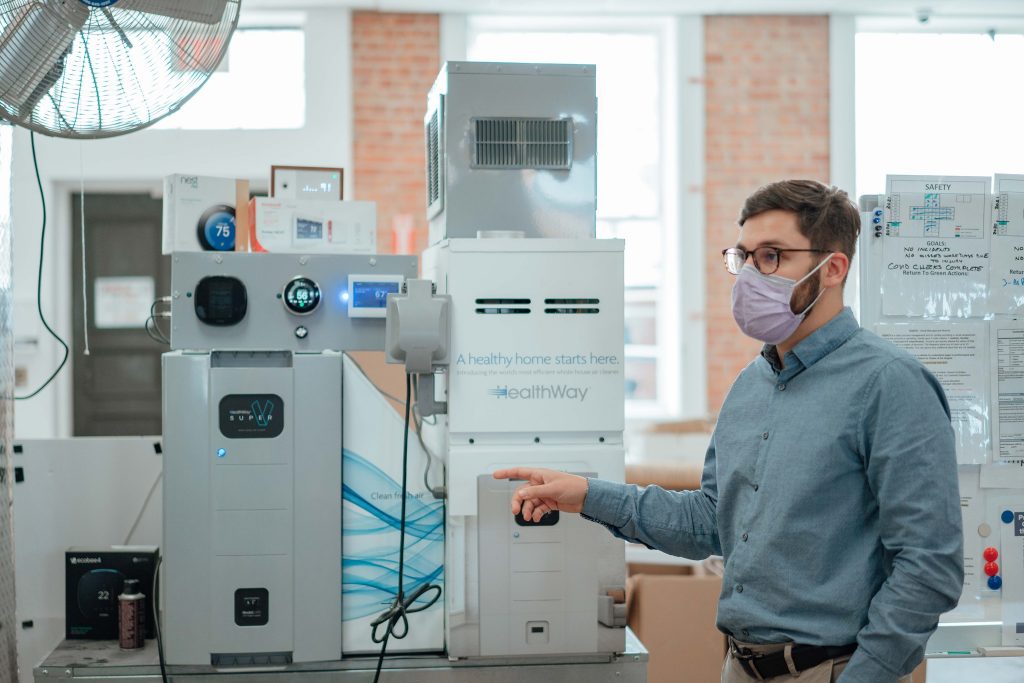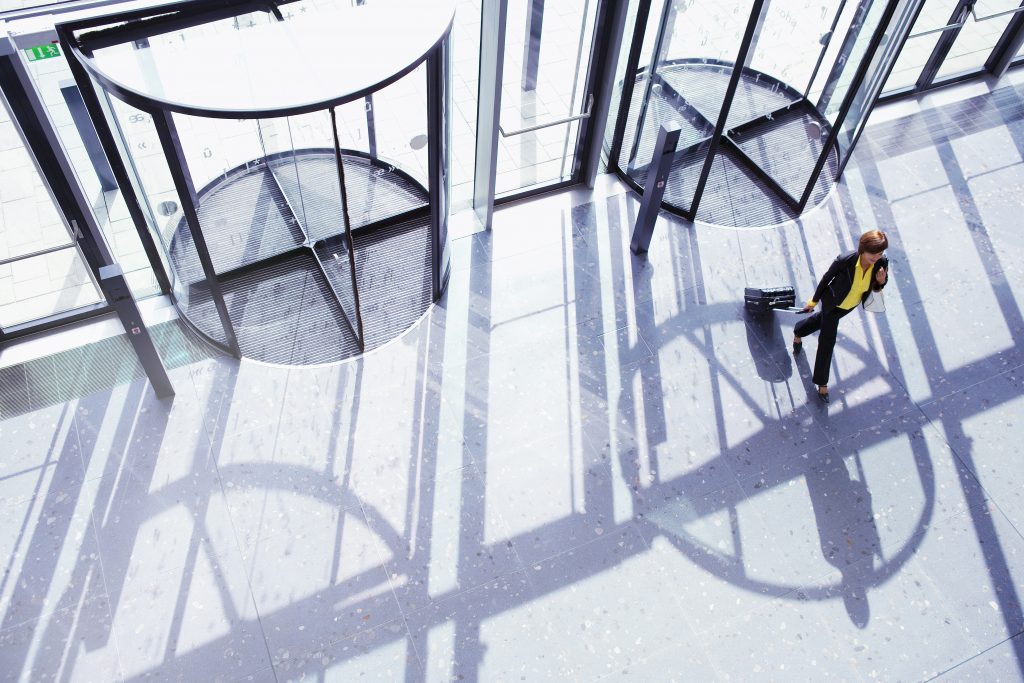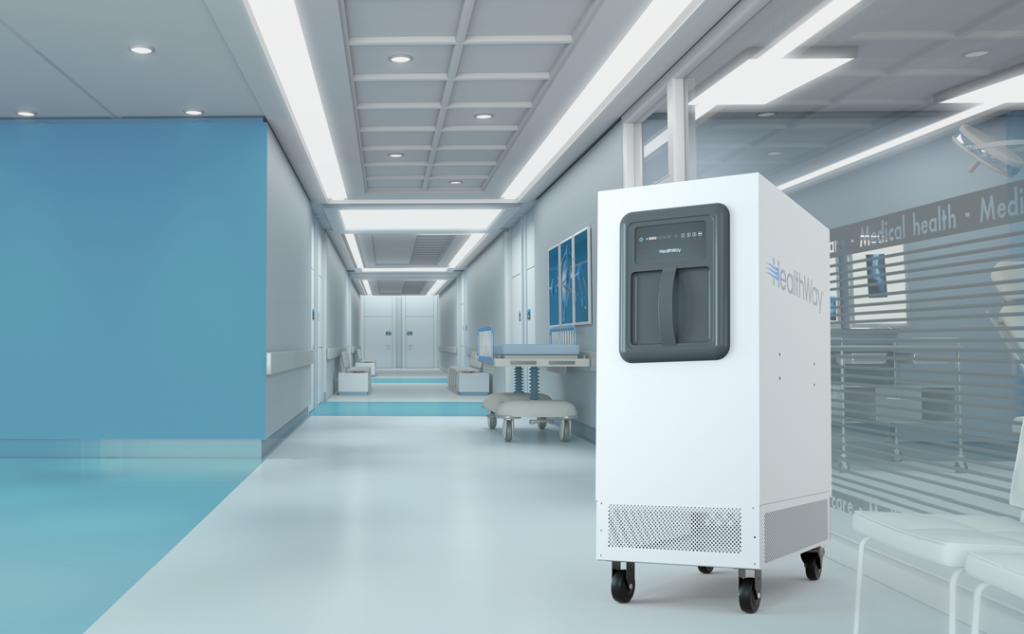
To get started, it’s important to understand your IAQ challenge. From mold remediation to wellbeing, indoor air quality concerns aren’t all the same, which is why we created this resource to help you learn more about your problem and what you can do to solve it.
Get StartedThere are many indoor air quality challenges that face our world. Right this very second, it’s likely that you are challenged with one or many of them. In this guide, we’ll cover the 6 most common IAQ problems – the first step in solving your challenge. Select the option below that most closely aligns with your situation.
Health & Wellness Pre-Existing Conditions Occupational Health & Safety Mold, Mycotoxins, & Radon Outdoor Conditions Airborne Viruses
For many, a healthy lifestyle is top of the list. Read more about how indoor air quality can improve your health and wellness.
All of us want to live a long and healthy life without the risk of harm from ultrafine particles. But, it appears that unless we do something about it, we aren’t guaranteed the best quality air. According to the EPA “Decades of research have shown that air pollutants such as ozone and particulate matter (PM) increase the amount and seriousness of lung and heart disease and other health problems.”
Many air pollutants come from the use of energy or the production of energy. Take a look around, what in your space is producing or using energy? This might give you an indicator of what is also, producing air pollutants.
Many wellness experts recommend air purifiers as a solution to everyday air pollution and to improve indoor air quality in any space. As a preventive measure, but also to create a well-rounded and healthy environment, you may want to consider a high-efficiency air purifier that can remove particulate matter at .3 micron or better.


For some, indoor air quality is imperative to their health. People with particle sensitivities or pre-existing respiratory conditions may need to consider the air quality of the environments around them – both indoors and outdoors.
While there are many pre-existing health conditions that may be exacerbated by poor indoor air quality – organizations such as the EPA and American Lung Association suggest that these conditions should take special consideration. To learn more about additional steps you should take, we recommend speaking to your physician.
While not always the case, poor air quality can result in worsening symptoms, medical visits, reduced quality of life, and unfortunately, premature death.
We’re dedicated to helping find a true solution to improve indoor air conditions for people no matter what their current condition. Over the years, we’ve seen a tremendous outpouring of individuals who are affected by seasonal allergies and we’re proud to say our products have made an impact on many of them.


We spend much of our lives in the workplace. Like cleanliness of facilities and safety protocols, employers are required to provide healthy indoor air. Depending on country and state, there are laws and guidelines suggesting minimum mechanical controls for indoor spaces.
Creating a healthier workplace not only protects employees but also reduces healthcare-related costs. OSHA states that “for every 1,000 workers, poor indoor air quality accounts for 600 sick days per year.”
As a result of the COVID-19 pandemic and worsening air conditions around the globe, governments are beginning to increase requirements for employers pertaining to indoor air quality.
For example, in May of 2021, New York State signed a law called the NY HERO Act, shortened for “The New York Health and Essential Rights Act”. This brand new, first-of-its-kind policy focuses on workplace safety as it relates to airborne infectious diseases. According to the NYS website, the purpose of the NY HERO Act is to “protect employees against exposure and disease during a future airborne infectious disease outbreak.”
There are often simple, inexpensive measures that can solve many IAQ challenges – and we find that the cost and effort put forth towards solving these challenges is often much less than that of effort required to solve downstream negative effects in the workplace.
According to Joe Allen, Associate Professor, and Director, Harvard Healthy Buildings Program, “There’s a perception that healthy buildings are expensive, but they’re not. Actually, sick buildings are expensive. But we tend to think of the energy costs or the upfront costs, without contemplating the human health and productivity costs…” When we think about buildings and spaces this way we can together work towards making our world a better, safer place for all.


In certain spaces, the challenge of mold is an unknown one until it is visual or there is a smell. You may see it on walls, carpets, or even outside around your home. For many living around mold, it’s virtually invisible and they never know it’s there.
What people don’t realize is that mold is virtually everywhere. Excessive mold or mold spores do pose a problem and for some humans, there can be severe side effects and onset conditions. According to the CDC, some people are extremely sensitive to mold and may experience side effects such as a stuffy nose, wheezing, or itchy eyes. As with most IAQ challenges, people with pre-existing conditions are most susceptible to adverse reactions and side effects.
While all challenges are different, we try to take the same methodical approach to deal with indoor air quality challenges. First, you want to treat the source of the problem. Second, you want to increase ventilation. Finally, when you’ve done all you can do you’ll want to look to air purification to make an improvement in the air quality.
When it comes to mold, the source of the problem is almost always some sort of dampness or water. The CDC recommends keeping your humidity levels around 30%-50% all day long. To treat a mold problem, you’ll want to consult a local expert to ensure you remove and permanently remove the problem. Towards the end of your remediation efforts, we strongly recommend implementing an air purifier to ensure better air quality and reduced spread of mold spores throughout your space.


Year after year, it appears that wildfires have expanded from seasonal phenomena to lengthy events. Many miles away from the source people are affected by the air pollution brought out by these wildfires. Furthermore, other outdoor conditions such as ozone and fossil fuel pollution contribute to a difficult problem.


The COVID-19 pandemic has created a fundamental shift from focusing on protecting our buildings to the safety of our occupants. The health & safety of spaces has been at the forefront for all building operators as people navigate a new world. We know that many viruses are airborne and that increasing air exchange can help reduce the particle load in important spaces throughout our society.


Learn and take a deep dive into your IAQ challenge. This will help you build up a foundation and learn the principles of indoor air quality.
What surrounds us matters. Learn about your space(s) and starting planning how to solve your indoor air quality challenge.
Taking the information learned during Discovery and Planner, find the right solution and/or partner to make a real impact in your space.
At HealthWay, we are working to make the world a better, safer place. We’re looking forward to serving you and helping to solve your indoor air quality challenge. If you haven’t found what you’re looking for, please don’t hesitate to get in touch with us today. Fill out our online form, or feel free to give us a call. Our standard business hours are 8:00 am to 5:00 pm EST, Monday-Friday.